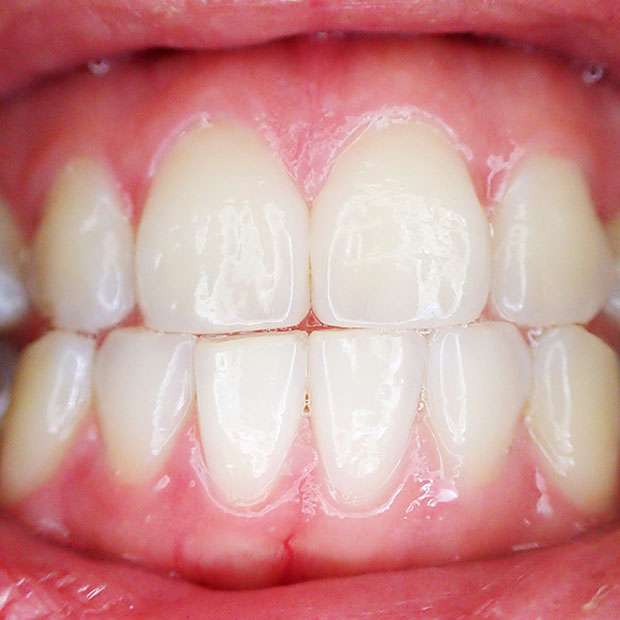A Closer Look At Our Teeth

We use our teeth all day, every day, for chewing, talking, and flashing big smiles at friends and family.
What are the structures that allow our teeth to do so much? Let’s take a look at what our teeth are made of.
Layer 1: Tooth Enamel
The portion of each tooth that we can see above our gum tissue is the crown, and it has three different layers. On the outside is a protective layer of enamel, the hardest substance in our entire bodies. It has to be so that we can chew our food effectively. Unlike bone, enamel isn’t made of living cells, so it can’t repair itself as easily. It’s also vulnerable to acid erosion. We can protect it with regular brushing and flossing, dental visits, and by cutting down on acidic and sugary foods and drinks.
Layer 2: Dentin
Underneath that hard layer of enamel is dentin, which is softer and more yellowish. Like bone, dentin is calcified living tissue. Microscopic tubules run through it from the pulp to the enamel, which is how we are able to feel temperature in our teeth. If you’re experiencing tooth sensitivity, your enamel might have worn down enough to expose these tubules.
Layer 3: Dental Pulp
At the very core of each tooth is a chamber containing dental pulp, tissue consisting of nerves and blood vessels that keep the tooth alive and give sensation. This includes pain receptors that warn us when something is wrong with the tooth, such as tooth decay reaching the pulp.
Getting Down To The Roots
Like with icebergs, there’s more to teeth than we can see on the surface. The root extends deep into the jawbone, held in place by tiny periodontal ligaments and supported by gum tissue. The roots themselves are hollow. Nerves and blood vessels run through canals in the roots up to the pulp chamber in the crown.
Unlike the crown, the root of the tooth isn’t protected by enamel. Instead, it’s covered in a slightly softer substance called cementum. Cementum and healthy gum tissue work together to protect the root, but gum recession can leave it vulnerable.
Taking Care Of The Whole Tooth
We need all of these components for our teeth to stay strong and healthy, which is why we should keep oral health and hygiene as a high priority. Regular dental appointments and good brushing and flossing habits are essential for taking care of the outside of our teeth, and good nutrition helps keep them strong from the inside out!
